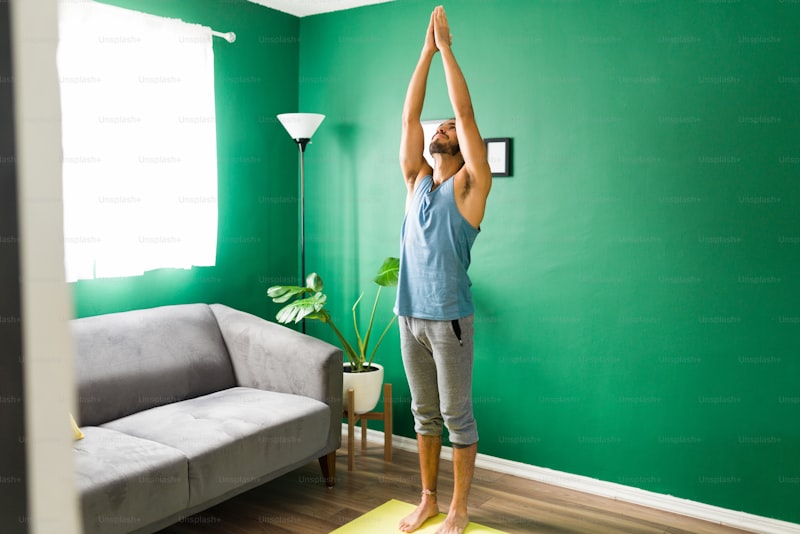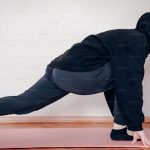Mountain pose seems such a simple asana when we start out yoga journey, often being seen as just a starting point for the fun stuff. But is that all it is? I say no — it really is so much more. With multiple muscle activations and alignments galore to get to grips with, it offers a challenge to even the most advanced yogi and has the potential to banish pain. Intrigued? Read on.
Marvellous Mountain Pose
Mountain pose, or Tadasana, comes at the beginning and end of our sun salutes, is often used during vinyasa flow sequences and forms a starting point for many transitions. I often think that it acts like punctuation to our practice, introducing pauses to dynamic flows in the same way a comma does in a sentence.
Frequently these pauses are used as a chance to relax and catch your breath but if you really want to enhance your practice, how about using every second of that time in Tadasana to activate, stabilise and grow?
See Also: Do You Know What Kind Of Sun Salutations You’ve Been Doing?
How Tadasana Improves Health
Tadasana is a wonderful pose to really get to grips with grounding through the feet, exploring how a firm base can really activate the legs for that strong, rooted pose… just like a mountain!
Strong, active legs provide a solid foundation for lengthening the spine, unfolding the kinks that a modern lifestyle puts in our spines. The axial extension that we use to lengthen the spine and grow taller actually decompresses joints and discs in the spinal column. That decompression takes pressure off sensitive soft tissues and allows nourishment to the discs — all so important for our spinal health.
This pose is a dream for teaching good postural alignment. Cue students to achieve the small forward curve of the lower back; the slightly flexed position of the thoracic kyphosis (middle back) and the balance the head atop it all with the small curve of the neck. This balanced posture also takes strain off any muscles and ligaments that are overworking in poor posture so has a real potential to reduce spinal pain.
Moving into good postural alignment from poor posture will always feel strange — students may even feel that they are going to fall over backwards as they approach better alignment the first few times. Don’t worry! Using mirrors or verbal feedback to reinforce how good the corrected posture looks is usually enough to reassure them until the benefits are felt.
See Also: Does Your Back Hurt From Sitting Too Much? Try These 6 Poses!
How to Achieve the Perfect Tadasana
- Stand with feet parallel to the sides of the mat — possibly touching at the big toes if there is enough length over the outer hips, feet hips width apart for those with less open hips.
- Find the breath, maybe ujjayi breath if this is appropriate.
- Ground equally through all four corners of the feet.
- Activate the inner thighs (inner spiral), draw back the outer thighs (outer spiral) and gently pull knee caps up the fronts of the thighs. This gives the pose a fully engaged, active and firm foundation.
- Lengthen the spine by drawing the tailbone to heels and growing the crown of the head upwards – this is that axial extension I mentioned earlier.
- Draw the shoulder blades down the back and towards each other, feeling the front of the shoulders and chest opening.
- Tuck the chin back so that it lines up with the the breast bone rather than the toes before seeking a little more length in the neck and rising the crown of the head to the sky.
- Activate the arms as the fingers stretch to the floor, drawing the points of the shoulders down and away from the neck. This part of the pose is lovely for anyone with tight muscles in their neck and upper back.
- And breathe… don’t rush out of the pose. Pausing for maybe five to ten breaths here gives the body a chance to get use to the alignment and really feel benefit.
Sequencing Tadasana
As we mentioned, Tadasana appears frequently in many yoga classes but it is rarely given much attention. Devoting time to carefully build the pose from its foundations and spending 30-45 seconds holding the pose is really worth exploring. This will strengthen the foundation of your students yoga practice and encourage improvements in their posture off the mat. This has real potential to help resolve neck, back and shoulder pain for your students and keep them away from physiotherapists like me.
Tadasana is really accessible for most people. It can be used as a modification for students who are not quite ready single leg balances due to injury or illness. It can be substituted for any standing pose that a student finds uncomfortable or inaccessible. It would sit wonderfully in a class for older adults who may have balance issues and will help towards falls prevention.
For anyone unable to stand, Tadasana can also be done in sitting. Squeezing knees together (with a block between the knees maybe) and drawing the outer thighs back can still be encouraged. Cue grounding through the sit bones and feet for students able to activate their legs, or just sit bones for those with no use of their legs. And everything above the pelvis is the same as for the standing version. This sitting version is a great strength builder for anyone recovering from a period of immobility and it gives the body a lovely change from the chair shaped slouch that many people tend to adopt if they are infirm or unwell.
See Also: 6 Discreet Yoga Poses You Can Do At Your Desk
The Moral of Mountain Pose
I am a great fan of Tadasana — as you may have guessed. It grounds, strengthens, aligns and opens the body. You don’t even need to be on a mat to practice it! I frequently work on my Tadasana off the mat; waiting for the kettle to boil, in a queue, cleaning my teeth, waiting to cross the road — the possibilities are endless! So, I say we should find our foundations with more Mountain Poses! Spend more time in tadasana and I think you’ll come to love it too!













